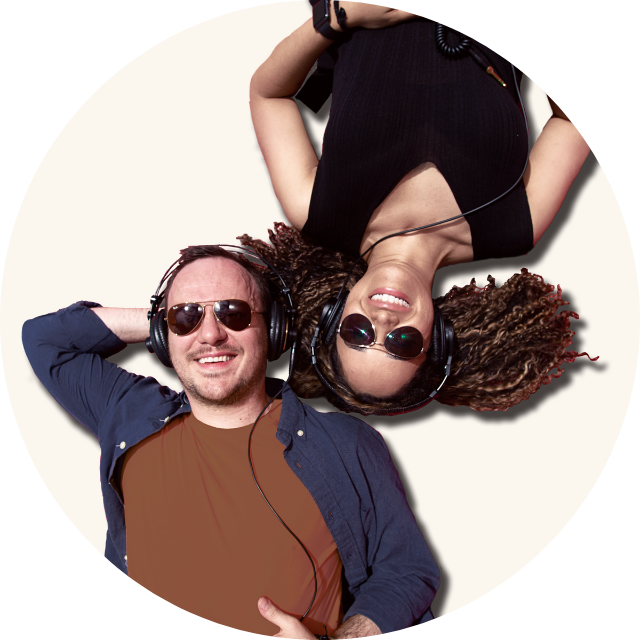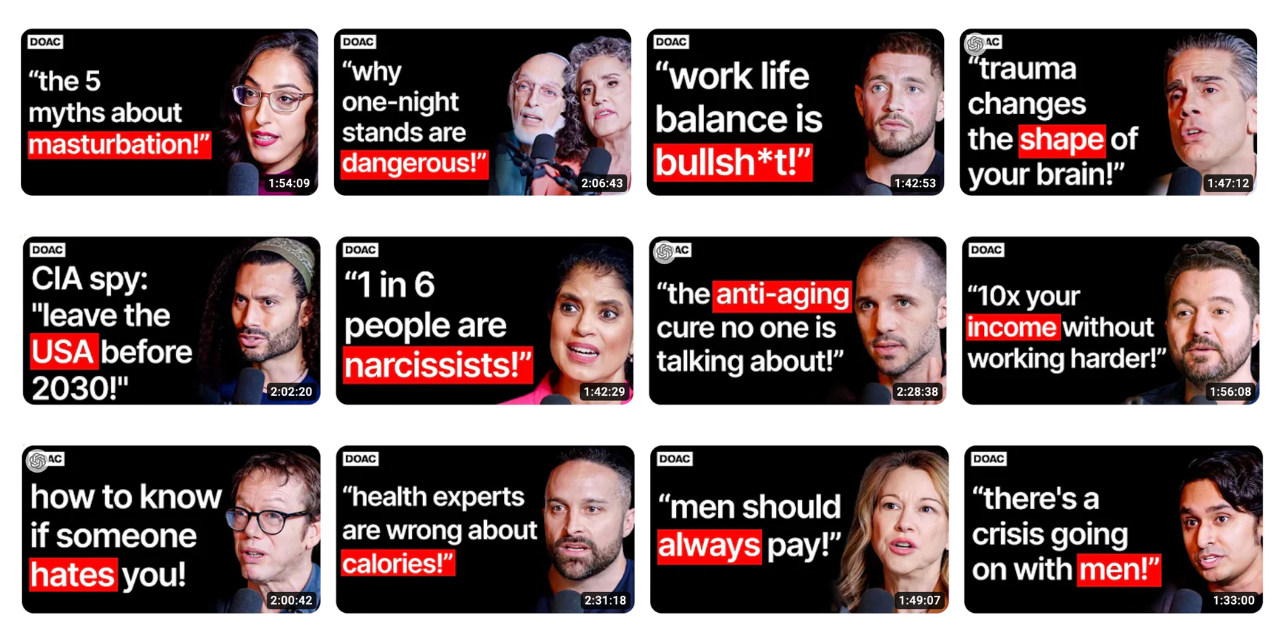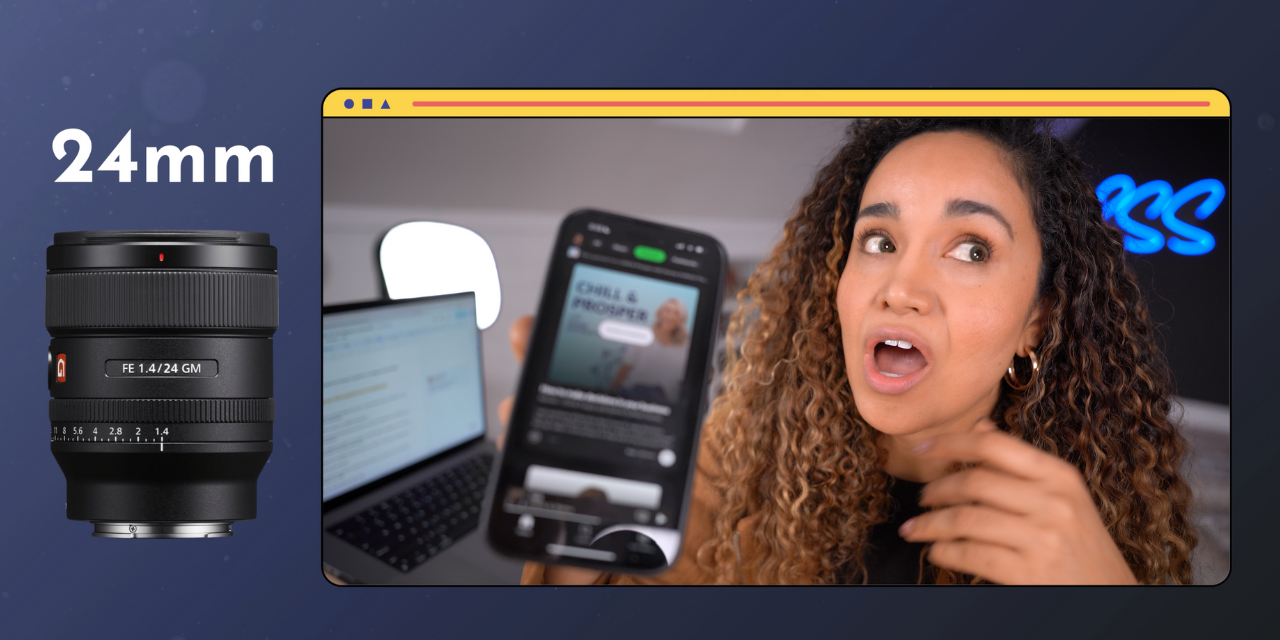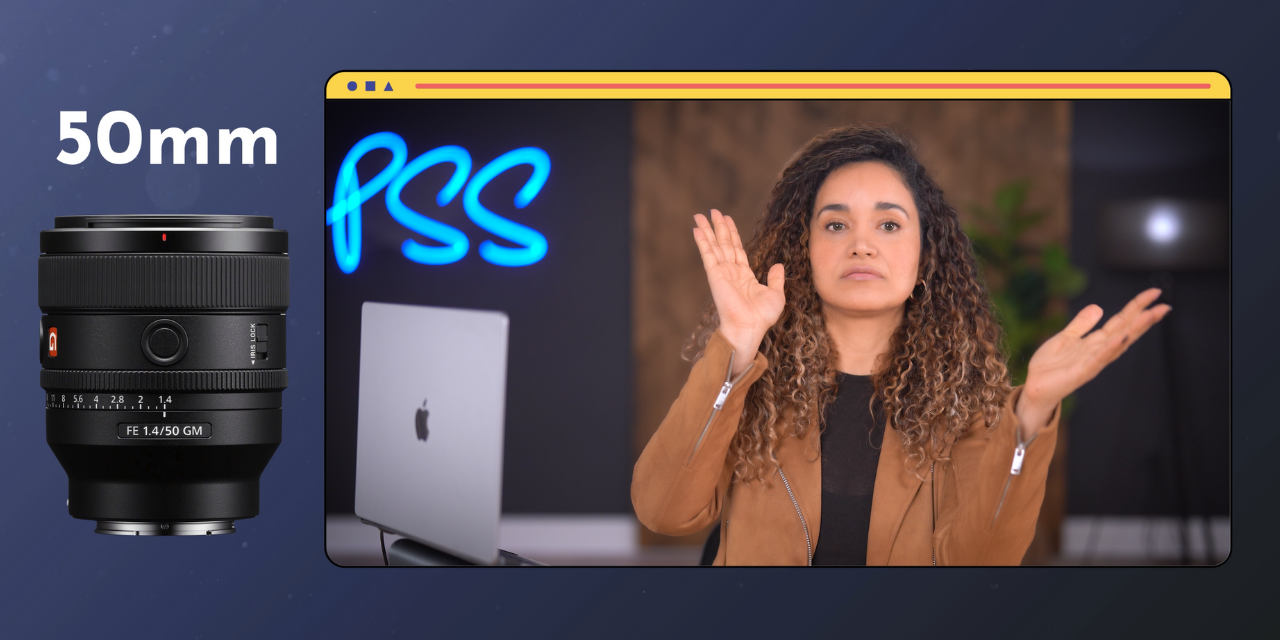Starting a YouTube Channel for Your Podcast in 2024 (5 Things You MUST Know)
As an Amazon Associate, Pod Sound School earns from qualifying purchases made through the links provided on this website. This means we may receive a small commission at no additional cost to you if you choose to purchase through these links. Your support helps keep the content coming. Thank you!
If you want to start a YouTube channel for your podcast or you’ve been posting your podcast on YouTube with not a lot to show for it, keep reading.
I have seen many podcast creators with great content on YouTube not getting the exposure and growth they deserve because they haven’t learned how to package their episodes so they get views.
But this won’t be you because I will share:
The 5 Most Important Things You Should Know About Starting and Growing Your Podcast on YouTube
1 - Don’t Automatically Distribute Your Audio Only Episodes to YouTube!
If you want to start a YouTube channel for your podcast, there are two ways to share your podcast episodes.
The first one is linking your podcast RSS feed to YouTube so you can automatically upload new episodes every time you release one, the same way you do with Apple Podcasts and Spotify.
We’ve posted videos on our channel showing you how to set up your podcast RSS feed from your podcast host and inside your YouTube studio.
When you share your RSS feed, your audio-only episodes are converted into videos with a static image of your podcast cover or episode art. The audio plays over the static image like an audiogram. Also, information like the episode title and description gets transferred to YouTube via an RSS feed.
Although having some presence is better than having none, this strategy won't really help you grow your podcast audience on YouTube.
Remember, YouTube is all about video. That’s the kind of content its users are looking for and what gets recommended, and sadly, static images with just audio don't do nearly as well.
The other way to distribute your podcast to YouTube is to record a video podcast and upload the video to YouTube and distribute the audio to the podcast players.
But dumping your video episodes to YouTube without learning about what makes people click on videos and how to keep them watching after they click is a waste of content and it will clutter your channel with episodes that don’t perform.
Also, there are things you can do when you post your podcast that will make youtube suggest your podcast to new audiences and have your content in front of new people not just your subscribers.
And the next most important thing you should know if you’re starting your channel is that
2 - Titles and Thumbnails are Very Important on YouTube
The Right Way to Title Your Podcast Episodes on YouTube
I have seen many podcasts on YouTube with titles that don’t tell me anything about the episode.
They have the episode number and sometimes the name of the guests who are being interviewed, but not what the episode is about.
Let’s illustrate this for a minute. Let’s say that you’re browsing through YouTube because you want to learn how you can grow your podcast audience, and you see this title:
You wouldn’t click on it. Because it’s about an interview with some rando, you have not heard of before.
But if instead you see this title:
Then you will click on it because that’s exactly what you’re looking for.
A good chunk of the time I spend planning my podcast episodes and videos goes to finding a good title.
My research starts with TubeBuddy, which is a Google Chrome extension I use to find highly searched keywords for my niche.
I also use TubeBuddy to find other creators who have made videos using the same keywords to see how those videos perform so I can give the title my own spin or make it relevant to my audience.
Doing this for your titles will help you increase your views immediately.
YouTube Thumbnail Best Practices
We used to cram a bunch of words and images on our thumbnails, but now I’m opting for simplicity and adding fewer words to my thumbnails. No more than five words.
You don’t have to cram the entire title of your episode on your thumbnail; this is an opportunity for you to use words that will cause curiosity, and people can not resist clicking on your thumbnail.
A good example of this is the Diary of a CEO podcast. If we look at the thumbnails, we will see that they all include phrases that make you want to click on the episode to find the answers or learn more.
3 - Avoid Long-Winded Podcast Intros: GET TO THE POINT
After you have captured the attention of your viewers with your title and thumbnail and they click on the episode, the last thing you want to do is to spend twenty minutes on your intro.
On YouTube, the first thirty to sixty seconds of your video will dictate whether it will be recommended to more YouTube users or not.
If you lose more than fifty percent of your audience in the first sixty seconds of the video, YouTube takes this as a signal that the video is not good and will stop suggesting it to other people on YouTube.
So, if you have these long-winded intros introducing yourself, the podcast, and your guest and all her accolades, and you get into the episode this will hurt your audience retention and views.
So, I recommend my clients start with the question, problem, or transformation your audience will experience if they give you their time.
For example, if you’re interviewing a guest about “habits that can improve sleep,” I want you to start the episode with:
“Do you struggle to go to sleep at night?”
OR
“Sleep deprivation is the number one cause of stress and heart disease in the US,”
OR
“Sleep is a big struggle for me,”
OR
“At the end of this episode, you will have an action plan to significantly improve your sleep.”
In those first sixty seconds, I want you to convince the viewer or listener why they should spend their time listening to what you say or your listener has to say. I tell my clients all the time that in the first sixty seconds, I want them to sell me the episode.
YouTube will suggest your episodes to new audiences who know nothing about you or your podcast and are just interested in getting the information they want.
Once you get them to click on your episode, if you don’t give them what they want, they’ll move on.
But if you hook them into the episode and deliver on your promise, they will not only stay but will become subscribers.
We create a highlight reel of the episode and place it at the beginning of the episode for our clients; your editor can do this in post-production.
Your editor will take key moments in the episode and add dynamic transitions and animations to open the story loop and keep people curious and glued to the episode.
4 - Video Podcasting Camera Best Practices
It is important to invest in quality equipment. It’s an immediate way to associate your podcast and brand with quality without saying a word.
While this investment can be pricey, professional video equipment has become affordable for independent creators.
Now, for only a few thousand dollars, you can own equipment reserved for world-class studios and production companies only a few years ago.
When it comes to getting a great camera setup, the lens is more important than the body in terms of picture quality.
Hold on, Veronica, Body? Lens? What are you talking about?
The thing that makes professional cameras stand out from smartphone cameras is the camera’s Lens. A professional camera lens is how you achieve that cinematic look with crisp details and a softly blurred background.
Many camera bodies are sold by themselves, and you can attach an assortment of lenses.
It is all very complicated stuff and definitely worth educating yourself on. But don’t worry, I’ll hook you up with a quick takeaway.
Spend more money on the lens than the body.
Our top camera choice is any of the Sony DSLR cameras with any good Sony Lens. For most creators, the all-around best type of lens or LENS FOCAL LENGTH will be 35mm.
Some creators use a 24mm lens when recording in a really tight space or when they want to be very close to the camera.
Other creators use a 50mm lens for a more classic portrait look with an even more blurry background.
My top recommendation for those just starting with video podcasting is the Sony ZV E10 and the Sony FE 35MM GM Lens
You can click on the links above to be taken to Amazon.
So please, don’t skimp on this step. Your podcast deserves to look crisp, sharp, and cinematic.
You will gain instant credibility and experience show growth much quicker when you purchase and use professional equipment properly.
5 - Audio Quality is More Important than Video Quality
You may argue on this point, but the reality is that nothing will turn a viewer away from a video quicker than bad audio.
Podcasts are a type of content that I like to call Audio First Content, meaning it’s assumed that podcasts are typically long-form content where the audio is the first priority.
Whatever your do, do NOT go cheap on your gear. Hey, I’m all for DIYing, getting creative with budget setups, or looking for a good deal.
However, professional audio equipment is mandatory if you want to grow quickly, establish influence, and have a good reputation.
It also gives your audience a wonderful listening experience. And since you love your people, don’t you want to give them a delicious audio experience?
Luckily, pro audio equipment has also become very affordable.
In fact, the go-to professional setup that we purchase and set up with our clients only costs about $1,200 US, and that is for two microphones and a great audio interface.
Purchasing professional audio equipment is the first step. The next step is to learn how to use it properly and capture great recordings.
You will need to educate yourself on this deep subject, but I’ll give you a quick tip here.
Our go-to microphone setup is the Shure SM7B with the SSL 2+ USB Audio Interface. This setup requires only a mic stand and mic cable for each mic.
That's it. You'll need everything you’ll need to make a real impact on YouTube with your podcast.
WATCH THIS OR READ THE POST ABOVE - Starting a Podcast Channel on YouTube in 2024 (5 Things You Must Know)
Conclusion:
Venturing into YouTube with your podcast requires more than just posting audio episodes or dumping video content without a strategy. To truly succeed, you need to understand the platform's nuances and tailor your approach accordingly.
Every aspect of uploading your podcast episodes on YouTube plays a vital role in attracting and retaining viewers, especially these 2 pieces:
AVOID auto-distribution of audio-only episodes
Master the art of compelling titles and thumbnails
Additionally, optimizing your podcast's introduction, investing in quality camera equipment, and prioritizing audio quality are indispensable steps toward building credibility and fostering audience growth.
By implementing the 5 factors discussed in this post, you'll not only enhance your YouTube presence but also cultivate a dedicated following eager to engage with your podcast.
We work one-on-one with Creative CEOs who need help launching their shows and setting up their studios. LEARN MORE about working with us inside my FREE mini-course Idea to Podcast Simplified for Business Owners:








